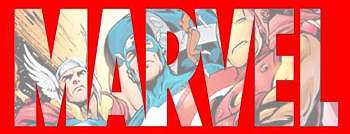
Insurance companies aren’t what most people think of when they think of innovation, but you’d be surprised. American Family Insurance (AMFAM) based in Madison, Wisconsin, is doing some interesting things and a lot of it has to do with their Chairman/CEO (Jack Salzwedel), Chief Business Development Officer (Peter Gunder), and Innovation Director (Dawn Mortimer).It may seem counter-intuitive that firms in regulated and risk-averse industries have great innovation potential, but at South Street, we believe these constraints are huge catalysts for growth and change.
AMFAM’s previous innovation endeavors were focused on products and specific business areas. Now, AMFAM pursues innovation at three different levels across the entire organization: operational, transformational, and disruptive, with the ultimate goal being disruption and new business creation. What’s changed is the aspiration and intention to be a leader and disrupter, not a fast follower.
One focus for disruptive innovation is launching new business models such as Assure Start, insurance for small businesses sold directly online. Another focus is venture capital investing in start-up companies and early stage ventures that have differentiation potential. Related to this, in the past two years since Jack Salzwedel has been CEO, AMFAM has acquired Permanent General (a direct auto carrier) and Homesite insurance (home insurance).
Since setting up AMFAM’s enterprise-wide internal innovation program in late 2011, Dawn Mortimer has engaged 60 VIPs (Vital Innovation Partners) from different levels and functions across the business to participate actively in the innovation process. They spend 5-10% of their time to move ideas through the innovation funnel and review hundreds of submissions from employees and AMFAM’s agents. Using BrightIdea’s innovation platform, general and focused challenges have been launched and innovations have been achieved from new mobile apps to claims process improvements. Rewards and recognition for participants at each stage gate — from cash, to public recognition “Roof Raiser” and “People’s Choice” awards, to cool parking spots in the winter — have helped keep employee engagement high. And using a consulting model, the team of 8 innovation engineers works closely with business areas to fund pilot programs and proof of concepts.
AMFAM’s latest innovation endeavor has been focused, led from the top, well-funded, and aligned with overall strategic goals. This success story is still being written, but so far, it’s great to see a company embrace the innovation agenda and make such great progress despite its constraints.
Jennifer is a Director at South Street Strategy Group. She recently received the 2013 “Member of the Year” award by the Association for Strategic Planning (ASP), the preeminent professional association for those engaged in strategic thinking, planning and action.


 It is human nature to love a good story, and it’s no wonder that for centuries storytelling has been a powerful force for human learning, change and advancement. As business strategists, we use stories in a variety of ways in both strategy development and implementation.In strategy development, we often learn from case studies—stories of relevant successes and failures as well as analogs from other industries—to help inform our thinking on problems we are helping our clients solve.
It is human nature to love a good story, and it’s no wonder that for centuries storytelling has been a powerful force for human learning, change and advancement. As business strategists, we use stories in a variety of ways in both strategy development and implementation.In strategy development, we often learn from case studies—stories of relevant successes and failures as well as analogs from other industries—to help inform our thinking on problems we are helping our clients solve. Kristin Vincent, VP, Product at
Kristin Vincent, VP, Product at  More and more companies are focusing on trying to better understand and improve their customers’ experiences. Some want to become more customer-centric. Some see this as an effective path to competitive differentiation. While others, challenging traditional assumptions (e.g.,
More and more companies are focusing on trying to better understand and improve their customers’ experiences. Some want to become more customer-centric. Some see this as an effective path to competitive differentiation. While others, challenging traditional assumptions (e.g.,  Just over a year ago, leading toy maker the LEGO Group launched its new line of blocks and figures for girls called LEGO Friends in key global markets in the Americas, Europe, and Asia. It is one of the most successful launches in the company’s history and has already generated twice as much business as expected.The story of Friends started long before the 2012 launch, and deserves a full-length case study; for now I’m excited to share a little of what I learned from meeting and listening to Laura Post, Senior Director, Strategic Planning and Insights, for LEGO in the U.S., when she talked about LEGO Friends at the IE Group’s Women in Strategy Summit in New York City a few months ago.
Just over a year ago, leading toy maker the LEGO Group launched its new line of blocks and figures for girls called LEGO Friends in key global markets in the Americas, Europe, and Asia. It is one of the most successful launches in the company’s history and has already generated twice as much business as expected.The story of Friends started long before the 2012 launch, and deserves a full-length case study; for now I’m excited to share a little of what I learned from meeting and listening to Laura Post, Senior Director, Strategic Planning and Insights, for LEGO in the U.S., when she talked about LEGO Friends at the IE Group’s Women in Strategy Summit in New York City a few months ago.